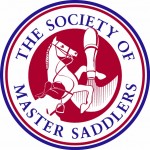Posted: 3rd November 2015 | Back to news feed

Correct saddle fitting is a key part of horse management and it is important that all parts of the saddle fit the horse correctly.
With this in mind it is therefore vital to understand the composition of a saddle and the different elements that comprise it.
Do you know your pommel from your cantle?
In this feature we give you the lowdown on all the parts of a saddle to make sure you are saddle wise and ensure your horse is happy and comfortable in his.
Almost all saddles are built on some sort of tree, whether it be made from traditional wood and steel or more modern synthetic materials such as strong plastics and polymers. Whatever materials are used, the tree is the most important single item for characterizing the shape and appearance of the saddle. Some of the more advanced trees which are common in a wide range of saddles today are adjustable. This means that the saddle can be adjusted from a narrow to an extra wide fitting through use of a tree adjuster. Alternatively adjustable gullet plates can be used to simply adjust the width of the saddle
Stirrups bars are normally attached to, or sometimes built into the tree and can be of differing length or adjustable. Dressage saddles usually have a longer bar so that the stirrup leather can hang further back, allowing the rider to sit in the classical position. On the other hand jumping saddles have shorter bars so the rider’s leg can sit more forward.
The seat is as it says, where the rider sits when in the saddle and the skirts are the sections that cover the stirrup bars.
The panel in the gap between the tree and the horse’s back contains either flocking material or air cushioning. Alternatively it may be pre-formed from a synthetic material or may be a mixture of all of the above.
The saddle flap varies enormously depending on the style of saddle and its intended purpose. Its shape must be cut appropriately according to the discipline the saddle is intended to be used in. A dressage saddle will be cut long and straight, whilst the jumping saddle will have shorter, forward cut flaps.
At the front of the saddle, the pommel essentially protects the horse’s spinal processes from the underside of the arch of the tree. The pommel should sit between one and three inches below the cantle, depending on the style of the saddle.
The cantle is opposite the pommel at the back of the seat which is raised and curved.
It is advisable to always seek the advice of a Society of Master Saddlers Qualified Saddle Fitter when choosing the right saddle for your horse.
Information about the Society of Master Saddlers can be found on the website: www.mastersaddlers.co.uk or telephone 01449 711642.



The Equestrian Index newsfeed is compiled from articles submitted by advertising members and expresses the opinions of those members. Watsons Directories Ltd shall not be held liable for any inaccuracies or mis-statements therein.
